In a Forum Topic posted last year (2020) about a 1932 Austin-7 Tourer car imported and driven in Hong Kong during the early 1970’s , I revealed that I had been the owner of this car. That story had a satisfactory ending with the car having been recently rescued from a barn in USA and shipped back to UK for full restoration.
I also mentioned that later in the 1980s I had imported a 7¼” gauge miniature steam locomotive named ‘Holmside’, which is a 1/8th.-scale model of a saddle-tank steam engine constructed in 1901 for operation at collieries near Durham in north England. A second locomotive, a scale model of a 1980s British Railways InterCity 125 HST (High Speed Train) locomotive powered by a lawnmower petrol engine, was also added to the consignment.
Left & Centre Holmside under steam in the car park of Fragrant Villas , Clear Water Bay. Right : the petrol-powered HST engine
Having been delivered safely to my Hong Kong home from U.K., I then set about constructing a portable 500 ft.-long oval track and five passenger coaches. There was also a set of points with a short siding for performing maintenance and the stabling of the spare locomotive, while the other was in use. These together, formed the miniature railway which was taken to various carnivals and school fairs around Hong Kong as a major attraction during the period 1983-1989.
Open Day & Carnival at Shek Kong Airfield in c. 1988. Hundreds of visitors rode the train on that day. ( Left)“ Mike Elvy at the controls of Holmside and (Right) Chinarail’ in charge of the HST, apparently being chased by a large angry gorilla
Left : Chinese New Year , 1987 at Sam Pui Chau ( 三杯酒 ) near Ma On Shan Right: St George’s School Fair Kowloon Tong c.1989
At that time, I was fortunate enough to have a company-provided house at Clear Water Bay with two car spaces. My next-door neighbour also allowed me to spill out into one of his unused car spaces. Without this I would not have been able to create a small workshop and store all the railway equipment when not in use.
This was when I had a very well-paid job as a department head in an aircraft engineering company at Kai Tak Airport. However, after 13 years in the company I was beginning to get itchy feet and develop a desire for a business of my own. I had originally dreamed of opening a restaurant in a New Territories property with a large garden so that that the miniature railway could serve as an attraction in the grounds. However, with the high price of property and so many restrictions on land usage, this was not to be and I had to settle for something less ambitious. Thus, in December 1985 was born The Railway Tavern, a pub and restaurant at Tai Wai village within the rapidly growing new city of Sha Tin.
The reprinted green map indicates how New Territories telephone numbers lost their Area Code prefix “0”, changing to eight-digit numbers commencing with “2”. The second digit “6” indicated this was in Sha Tin district.
After opening the business with my Chinese partner, Tam, I didn’t resign from my full-time job; I just made formal declaration of the investment to my bosses and assured them that there would be no conflict of interest and that I would in no way be involved directly in its management (nod, nod, wink, wink). The reality was somewhat different.
I designed the decoration of both the interior and exterior with an antique railway theme. The exterior walls were red brick with neat light grey cement grouting and the old-fashioned style wooden-framed windows were multi-paned with orange stained glass . The window frames were also fitted with louvred wooden shutters, and all painted in Great Western Railway dark green. To conceal the edge of the over-hanging concrete canopy which ran around the frontage of the two shop spaces it occupied, I hung up ornate wooden weather valancing (“daggerboards”) which are traditional along the edges of roof canopies on British railway station platforms.
The main entrance to the Tavern required quite a high step up of about 12 inches to the interior floor level, so in order to make this a little more convenient I created an intermediate step. This comprised a wooden railway sleeper either side of which were two short lengths of steel railway track with stone ballast which I had cemented into a containing frame. The effect was to suggest to customers that they had to step onto railway tracks to gain entrance to the tavern. There was also a train red tail-lamp hung above the twin doors. The lengths of railway track had been provided courtesy of the Kowloon Canton Railways’ Chief Engineer (Permanent Way), the late Mike Elvy. Mike was very enthusiastic about this project and he facilitated the provision of a number of scrapped KCR items lying in their engineering stores which “fell off a passing lorry” into my hands where they were utilized for decorating the interior. These included several lengths of steel railway track not only for the outside step but also to form the footrest below the entire length of the bar counter.
The walls were decorated with dozens of railway photographs and antique ‘railwayana’. The main lighting was provided from converted antique railway oil lamps. (Left) At the back the miniature steam locomotive “Holmside” sits on a plinth where it was stored when not being used at fairs. After 1990 the locomotive never left the bar and remained with its steel parts slowly corroding and the whole engine becoming stained by tobacco smoke. It remained there until the tavern closed in 2015, a few months short of its 30th anniversary..
There were also one or two old KCR signs including a level crossing road sign which had originally warned motorists they were approaching the railway crossing on Tai Po Road just below Kau To Shan. Dozens of railway locomotive photographs and antique railway signs, which I had purchased in England, were also attached to the brick walls as decorative exhibits . The lighting for the restaurant and bar consisted mainly of antique railway oil lamps, which I converted to take electric bulbs. Two London & North Western Railway & Great Western Railway cast-iron plates from the 1880s era, each weighing about 10 kilos, hung outside the pub entrance warning customers they faced a stiff fine of 40 Shillings were they to trespass on the railway tracks or fail to close the gate.
Clockwise from upper left: A late 19th Century Railway Signal Telegraph with “Train on the Line” indicator; A ‘Walker’s Bell’ use by signal-box staff to communicate by telegraph with adjacent signal-boxes by sounding a series of coded rings on the bell. (rather like morse code); An Edwardian brass “Penny-in-the-Slot” door-catch used on railway station toilet cubicle doors…. giving rise to the term “spend a penny”. Two Chinese steam locomotive “Works Plates” from the 1970s. These were from scrapped QJ type ( Qianjin 前进 )locomotives which had been manufactured at the Datong locomotive works (大同机车工厂 ); Cast-iron London & N. Western Railway warning sign ; Enamelled steel Southern Railway station sign for the Waiting and Ladies Rooms (Toilet), which we used for the restaurant ladies’ toilet & Cast-iron KCR Level Crossing road sign.
The pub eventually opened just a couple of weeks before Christmas in 1985 after a bureaucratic struggle to obtain the necessary licences. An objection to the Liquor Licence was one of hurdles faced. A small church operating out of a flat on the 1st floor above the premises had an American priest who claimed in his formal ‘Objection Notice’ that the bar represented “a threat to his church”. Because of this objection I had to wait several weeks for a New Territories Liquor Licensing Board hearing. At the hearing the priest stood up and gave a speech about how my customers “would be a danger to the young girls at the church while they were evangelizing and seeking his comfort ”. The eyes of the Board’s male members almost spun in their sockets when this was translated into Cantonese. The day after the hearing a solicitor I had engaged to help in my presentation, phoned me to say off the record, “Don’t worry …most of the board are indigenous ‘jigei yan’ (自己人 - one’s own people) and from my area of the New Territories…. I know them all well”.
Chops, chops & more chops. A licence applicant got nowhere. without them. I guess this helped to keep civil servants employed.
The Liquor Board, satisfied that my customers had better things to do than endangering the priest’s “girls”, soon sent formal notification of the approval of the Liquor Licence. However, the Food and Environmental Hygiene Department would not actually issue this until they saw and “verified” that I had a restaurant licence and an “Approved Plan”. I phoned them back and quite angrily explained that they knew that the restaurant licence had also been approved two weeks previously but was just awaiting some official to put a chop on it and send in the post. “Not our concern…. that is a different section, we need to see that licence before we issue our licence” came the reply. (  ) Anyway, I took the risk and opened the taverrn two weeks before Christmas but minus the licences actually hanging on the wall. If the police had visited during this time I could have faced having the entire bar stock of liquor confiscated and been in court the next day. I was lucky the first police visit did not occur until after the new year by which time both the requisite licences were dutifully displayed on the wall.
) Anyway, I took the risk and opened the taverrn two weeks before Christmas but minus the licences actually hanging on the wall. If the police had visited during this time I could have faced having the entire bar stock of liquor confiscated and been in court the next day. I was lucky the first police visit did not occur until after the new year by which time both the requisite licences were dutifully displayed on the wall.
Left: Opening Day December, 1985 .From left:: (seated) Mike Elvy, (standing) Chinarail, Terry Mak (barman) ,Tam (partner) & seated on right Mike’s son David.
Using the miniature railway as a promotion for The Railway Tavern ( visible in background) during Chinese Year, February 1986. Tai Wai old village is on the right.
It would be selfish not to include a few words about our best customer for many years and also about our English barman, who later became a partner and the manager.
The very first customer through the door on the opening day in mid-December 1985 was Michael Elvy, then serving as KCR’s Chief Engineer ( Permanent Way), based conveniently nearby in the headquarters in KCRC House above Sha Tin station. During the building alterations and fitting out period, which had commenced in October, I had written to KCR outlining my intentions for decorating the railway-themed restaurant enquiring whether they might have any unwanted artifacts in their stores which would complement the theme of my business. I was unexpectedly delighted to receive a reply from no less a person than the Managing Director, Peter Quick , who stated they would be happy to assist if indeed there was anything which might be suitable and furthermore, I should liaise with their Chief Engineer, Mike Elvy. Mr. Quick also assured me that Mike would most likely take a personal hands-on approach to the task and show much enthusiasm. Later I learned why Quick had written this ….. Mike was very much a man who liked his beer. Within only one week he had appeared at the door of the construction scene asking how he might assist. He proved very helpful and found me a collection of old KCR photographs and several items for display in the bar which he had uncovered by rummaging around in the KCR Engineering stores, none of which was “on their books”, which meant there were no complications over government rules about submitting tenders and purchase orders etc. This would have taken forever.
Some years after we had opened an off-duty police man appeared in the tavern looking for me saying he had something I might be interested in . From a large bag he produced a heavy brass plate bearing the name “HONG KONG “. The policeman was the late Jamie Clements, then a police superintendent. He had just been appointed to head a new police unit set up to patrol and be responsible for the security of the Mass Transit Railway. During his home leave in Britain, he had secured a copy of the engineering drawing specifying the design and dimensions of the locomotive nameplate affixed to a Jubilee Class steam locomotive formerly operating on the London Midland Scottish Railway. These locomotives were named after the various British territories and colonies, “Hong Kong” being the name attached to the side of locomotive no. 45611 built in 1934.
Model of LMS Jubilee Class Locomotive 45611 “HONG KONG” & Reproduction Name Plate
Jamie, upon returning to Hong Kong had taken the drawing to a small brass foundry near Kam Tin and succeeded in have ten plates cast to the exact specifications. He offered me one for, I recall, $200. This was hung above the bar counter next to a renovated Chinese railway locomotive oil lamp. The latter, I had discovered covered in dust inside a disused railway workers' cabin on the soon to be dismantled track leading to Tai Shi Tou ( 大沙頭 ) station , the original Guangzhou terminus of the Canton--Kowloon Railway when it opened in 1911.
A Chinese Railways locomotive oil lamp hangs above the bar with its front white lens illuminating a photograph of the Peking station building constructed in 1908
Canton Tai Sha Tou terminus in c.1924. This building survived until the mid 1980s when it was demolished to facilitate road widening. There is now a commemorative railway park nearby and even talk of reconstructing a replica of this buiklding.
The abandoned sidings adjacent to Guangzhou’s Tai Sha Tou terminus c.1980. This is near where the railway oil lamp , hanging above the bar counter was found in a derelict wooden hut..
Returning to Mike Elvy; I came to know Mike very well because he rarely missed a day at the pub bar from 1985 until his retirement from the KCR in the mid-1990s. He would often come to the pub from his office in Sha Tin shortly after 12.30 by walking along the KCR track and then out through a maintenance gate in the fence, just a few yards from the pub. About 2 pm he would head back the same way. This was all justified as “permanent way inspection”. He once invited me to join him on this journey on foot. He had come prepared with a spare luminescent yellow safety vest which all maintenance workers on the tracks are obliged to wear. We walked back to Sha Tin along the railway line dodging the intermittent trains which came along. Their drivers never failed to give a long loud warning blast on their horns when we were spotted but it became rather tricky when two trains suddenly descended on us coming from opposing directions simultaneously.
After his retirement Mike purchased the miniature railway track, the carriages and the HST locomotive from me because a knee injury had put paid to my carnival days with the railway…..that railway gear is very heavy to carry around and erect only to disassemble it only few hours later. His son David Elvy became “driver-in-chief “ of the miniature railway at these events. I also agreed to loan them Holmside whenever they had an event.
The Governor Sir David Wilson and his wife riding behind Holmside at a Victoria Park Carnival in 1988. David Elvy is at the controls.
Regrettably drink got the better of Mike. Following his retirement, he made a disastrous investment by purchasing an existing bar business in a seedy backstreet of Tai Po. The bar district was under the influence of local triads and Mike had one problem after another with the bar; he was even beaten up in his bar one night by a drunken expatriate Government Administrative officer who was of departmental directorship rank. His business failed and he then went off to Thailand hoping to find employment with the builders of the new subway system then under construction in Bangkok. Unfortunately, poor Mike ended up on the street destitute and his photograph begging on the streets even appeared in Hong Kong newspapers. He was rescued by a Buddhist temple abbot who gave him accommodation in exchange for teaching English but the monks had to lock him in at night to prevent him from heading to his favourite Patpong pub. I travelled there to meet him but by then he was in very poor health. Later I heard that his family had rescued him and taken him back to England but he passed away shortly later. Mike, though does leave a very worthwhile legacy. Prior to coming to Hong Kong, he spend several years performing volunteer work to save the derelict Ffestiniog narrow gauge railway in Wales from closure. Those early volunteers laid the foundations for one of today’s most successful heritage railway attractions in Britain.
(Above) : Mike Elvy in the cab of 0-4-0 locomotive ‘Prince’ on the 1 ft 11-1⁄2 inch (597 mm) gauge Ffestiniog Railway. This locomotive, originally built in 1863, was one of first to be restored for the re-opening of the line in 1955.
It would amiss also not to write a few words about Frank Edkins . Frank was serving as a bombardier (equivalent to corporal) in the Royal Artillery when he was posted to Hong Kong in 1966 and billeted at Shek Kong Camp. There he met and married a Sheung Shui lady whom he had befriended in the Kam Tin bars; this was not an unusual practice among British non-commissioned soldiers in those days.
During the bar & restaurant’s first three years we had quite a rapid turnover of Caucasian part-time bar staff to cover our lunch times when the clientele were many expatriates. These staff tended to be backpacking university students on round the world sabbaticals staying in Hong Kong for just a few months to find work and top up their onward travelling expenses. We had just lost one barman and as usual I advertised the vacancy in the South China Morning Post. On this occasion, I had a rather out of the ordinary applicant. Frank, then aged 48 years turned up and told me he hadn’t worked for over eight years since his army discharge. He was living in a small Shek Kip Mei Government resettlement estate single-roomed flat with a wife and three children. They were struggling to make ends meet, dependent on his wife’s income from working in a small stall in Sheung Shui and his own very small army pension.
( Above) ; Frank Edkins at the bar. Sadly he passed away in November 2016 about eighteen months after the closure of the business.
My other partners tried to talk me out of offering him the job but I was impressed by Frank’s straightforwardness, which I interpreted as honesty. I was spot on. Frank was most honest person I have ever come across in my life … an invaluable asset for a bar and restaurant when the cash tills in those days were not linked to computers and were not easily reconcilable with the bar’s stock holdings. Frank was also a great hit with our expatriate customer base.
Some ‘Happy Hour’ regulars ( from left) Dugald Finlayson ; 'Chinarail’ (in brown cap) ; Frank Edkins behind the bar; David Tolliday-Wright; & Andrew Kwan. The enamelled steel red notice from London North Eastern Railway reminds customers to “Please Have All Tickets Ready”
The lunch times in the 1980s -1990s were a huge success. Many expatriates, especially engineers working in the southern New Territories regularly headed for a pub lunch at The Railway Tavern. Fridays were especially busy because this was often the start of the weekend. Many would come in at lunch time and only leave late afternoon to go back to their offices to lock up. Frank, assisted by our one Filipina kitchen helper, Elsa, would sometimes serve over fifty people. We had a very small kitchen and thus a limited menu serving British pub favourites : our own special “Railway Pie” (steak & kidney), shepherd’s pie or chili con carne (all made by the Ali-Oli Bakery in Sai Kung ) as well as fried sausage, egg and chips or homemade “Railway Sandwiches”. One day I walked into the kitchen at lunch time to discover a list of waiting orders for two items which were not listed on the menu. One was ”BS” and the other “BAG”. Intrigued by this, I enquired of Frank what precisely these were, He explained that one regular customer, Mr. Barnicott, liked a sandwich which was stuffed with greasy sausages, eggs and bacon. This then became popular with several other regulars becoming known as the “Barnicott Special”. Then a little later, one guy decided he wanted this with melted cheese all over it as well, so this became the Barnicott-au-gratin, hence “BAG”.
(Above) Some of the late evening regulars enjoy party time and Liar’s Dice .
In the early evenings we also had an expatriate-dominated “happy hour” regular group who came for the cheaper drinks but they would drift away by about 8 to 9 pm. Come 10pm. we then got a different crowd of local Chinese regulars who came in to play darts or liar’s dice … unlike the expats, they never complained about the higher prices charged after happy hour. However, with the lead up to 1997 the business began a long and gradual decline. Habits were changing. The largest impact was when a number of industrial accidents in Hong Kong were partially attributed to drinking alcohol at lunch time, not necessarily by the accident victims themselves but by engineers and supervisors responsible for safety on construction sites. It became taboo for professional engineers or technicians to have even a single beer during their lunch time break.
(Above) Chinarail’s own favourite perch was the corner bar stool where he could keep his beady eye on the cash till and the also see what was going on at most of the other tables.
By 1997 our busy lunch time trade had been killed off almost completely and eventually we no longer opened for lunches. Furthermore, when we had first opened in 1985 we were first and only pub in Tai Wai but by the year 2000 we were competing with as many as seven or eight.
Eventually the increasingly high rent charged by the property owner also started to bite hard. Finally in 2005, we had reached the stage where we were operating almost entirely for the landlord’s benefit. I considered closing down the business but a half-dozen local Chinese regular customers begged me to keep the tavern open because they considered it their “second home’. The partnership was therefore dissolved and the company restructured as a limited company and this small group of customers bought 50% of the shares in the company.
(Above) Following the dissolution of the former partnership, The Railway Tavern was incorporated as a Limited Company in 2005. And for first time since 1985 I was no longer able to certify the accounts. This henceforth required the services of a professional “bean-counter” to use publican’s parlance
This capital injection was basically used to keep the company lingering on for the next ten years. We did receive the occasional dividend but the good old days were long gone. In early 2015 we faced another expiry of the tenancy agreement and the shareholders had agreed reluctantly to, if necessary, to pay yet again higher rent. However one month before the signing of the new agreement the landlord changed his mind and we were given our marching orders ; “ no new lease”. We learned through the back door that an offer had been made by a Mainland company to buy the premises for some $50 million.
This was an unpleasant and sad time. The premises had to be stripped bare in less than two weeks. Since I retained ownership of the original antiques on display, I made a couple of sorties there to unscrew and take home the Victorian era cast-iron railway plates. But the fate of the miniature steam locomotive Holmside, still sitting sadly on its plinth, was a major dilemma. It was simply too big and heavy to take back to my home. Worse still, it was in terrible condition and I estimated that if I were to ship it back to England, where there is a market for these things, the cost of getting it there would likely exceed or only match the price it might realize in an sale by auction.
Left: Holmside being lifted out of the shipping box. Right: The dilapidated condition of Holmside after arrival in UK 2016.
Left; The wheel frame of Holmside ( after removal of the boiler). Right: The Inside of the cab and controls showing the poor condition.
Luckily another Hong Kong policeman friend came to the rescue; well a retired one, Angus Stevenson-Hamilton QPM, CPM. Although I had served over six years in the police force from 1965-1972, our paths had never crossed in those days. It was only after Angus had retired from the police that we came to know each other through The Railway Tavern. It was our dogs which started the conversation. My female Pekingese ‘Polly’ used to occupy a bar-stool adjacent to the stool occupied by Angus’ male Shih Tzu called ‘Marco’. Strangely the two dogs used to sit there silently, totally ignoring each other. I suppose spaying and castration are not the best veterinary procedures for encouraging canine love. (By the way, not one customer ever complained about our dogs being in the pub…..although this is illegal in Hong Kong.)
Above (left) Angus in his splendid feather plumed pith helmet and ceremonial uniform when serving as ADC (1978-1980) to the Governor, Sir Murray MacLehose, (later Lord MacLehose). Right : Angus (in centre background) worrying that he might have handed Sir Murray the wrong “gong” to award Elsie Tu with her C.B.E. in 1977.
Angus had recently sold his flat in Hong Kong and was planning a move to Devon, his furniture having been placed in temporary storage. Angus nudged me into mounting a rescue operation for the locomotive only two or three days before the entire remaining contents of the restaurant were about to cleared out and dumped. We went to the Railway Tavern together with another pair of willing ex-police hands (Bob Sones) to help lift the engine and hand it over to a friendly Sri Lankan removal contractor called Nauzer, who would then combine the engine with Angus’ house removal items. Bob having recently suffered a knee injury, was none too keen on lifting the heavy engine but having arrived in the pub with a screwdriver (a possible offence of "going equipped") he made a beeline for “Hong Kong” locomotive plate and the “Penny in the Slot” brass toilet lock. That was the last I saw of those. So if you are a collector of rare locomotive plates (which can fetch thousands of Pounds) be wary if a red-haired man in his seventies approaches you with a “genuine original” Hong Kong name plate for sale at a big discount.
(Above) Inspector Bob Sones of the RHKP Narcotics Bureau performing for the press cameras in 1978, after several blocks of refined heroin had been seized in the harbour, hidden inside a sack attached to some floats. Rumours abound that Bob can still occasionally be seen wearing the same pair of bell-bottomed trousers while rummaging around in piles of junk at car-boot sales near Wolverhampton.
(Above): Another Railway Tavern ‘Happy Hour’ regular and ex-Hong Kong policeman,. David Wright, known affectionately in police messes during the 1960s-70s as “Blob”. In the mid-1970s, by then a Divisional Detective Chief Inspector, David took early retirement and disappeared off to “Blighty” to become “learned”. After taking a degree in law and changing his surname, he was called to the English Bar (& likely several other bars) and reappeared in Hong Kong re-incarnated as a sort of “Tolliday-Wright of the Old Bailey”. Dave went on to become a much sought after defence counsel for triad society members finding themselves in a spot of bother with the police. Stories abound that in one of Dave’s earliest court cases as a Barrister, a ruffian appeared in court charged with being a member of an unlawful society. During police custody he had made a written confession which had been produced as evidence. Cross-examining the arresting detective, David is alleged to have said “I put it to you that you roughed up my client in the police station in order to force this confession”, to which the detective retorted “We don’t do that anymore since you left the force Sir”. Sadly, David passed away in 2022.
After settling into his new home in Devon, Angus set about finding somebody who could restore the engine. Eventually he located a member of the Newton Abbott Model Engineering Society who was well experienced at this work and agreed to take on the project. Move forward a year or so and in 2017 the engine, looking almost brand spanking new, was brought out of the workshop into the brilliant sunshine for its first boiler steam test.
( Above) 'Holmside about to have its first post restoration boiler test on the track of the Newton Abbot Model Engineering Society. (left): Peter Parks, who restored the engine.
There were some minor problems with bits and pieces on the engine and this delayed getting the engine performing perfectly for about another year. However, eventually all was put well and here we see Angus driving the restored ‘Holmside’ around the track at a society meeting .
(Above) Angus Stevenson-Hamilton QPM, CPM at the controls of the restored model ‘Holmside’.
And so ends yet another epic and probably overly self-indulgent tale by Chinarail of “All’s well that ends well” for the bits and pieces which he brought to Hong Kong from U.K in the 1960s-1980s.
[ Post Notes] : The Railway Tavern opened in December 1985, finally closing in April 2015, just a few months short of its 30th anniversary. The sale of the premises by the building’s owners that year never materialized and the premises sat empty for a full three years representing at least $3 million dollars in lost rent for the landlord (do I hear someone shouting “serves them right?“). In late 2018 the premises were once again occupied, now by a Japanese restaurant. I have no sympathy for the landlord over his loss of rental income. He killed off a popular New Territories ‘watering hole’ and put several people out of work. But for at least several hundred people The Railway Tavern still lives on as part of our “collective memory”…… now where have you heard that phrase before?.... Queens Pier?)
You may view short YouTube video clips of this miniature railway and of The Railway Tavern in the links below:
External Resources and Internet Links about The Railway Tavern and the miniature railway:
a) Local TV News feature ( YouTube Clip) https://www.youtube.com/watch?v=h-3wa4xv16o This is about Holmside and other miniature railway locomotives in Hong Kong during the mid- 1980s.
b) Video recording of Holmside & the miniature railway at St. George’s School ( a British military school) Carnival in about 1989. https://www.youtube.com/watch?v=HX6Ky3QhNhI&t=4s
c) A Kung Fu fight scene filmed inside The Railway Tavern in 1988. The film, starring Chow Yun-fat was called Tiger on the Beat ( Lofu Chut Gang 老虎出更) https://youtu.be/HGSOWFaj5Q4
d) ”Glorious Age of Steam – Railwayman Peter Crush” Feature article in the SCMP by Kevin Sinclair Friday Nov. 19, 1999. This is an article about the founder of The Railway Tavern (gwulo’s “Chinarail” ) and in particular his interest in railways. An auction of second-hand books in the pub was also being promoted, most being from the collection of Professor Peter Wesley-Smith who was retiring from the University of Hong Kong. (No direct online download link available.
e) Frank Edkins – An interview with Virginia Maher of the South China Morning Post 15 Sep 2003. https://www.scmp.com/article/427937/frank-edkins
f) Mike Elvy – Ffestiniog Railway - https://www.festipedia.org.uk/wiki/Mike_Elvy
g) Additional external photo links: https://foursquare.com/v/railway-tavern/4b0588cff964a5200edb22e3?openPhotoId=53918ec0498e1618fc0a7105
https://www.openrice.com/en/hongkong/p-railway-tavern-p77346
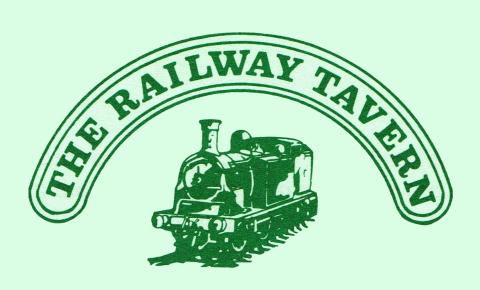


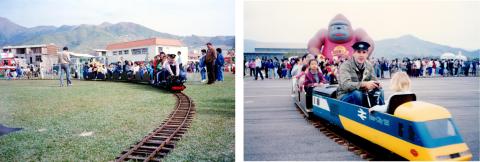
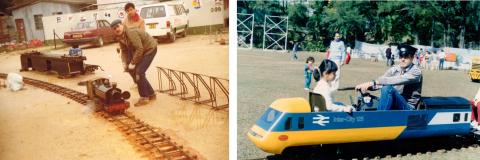

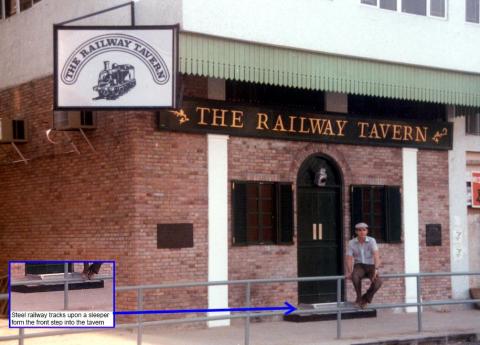

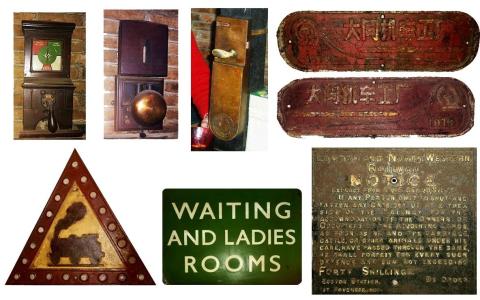


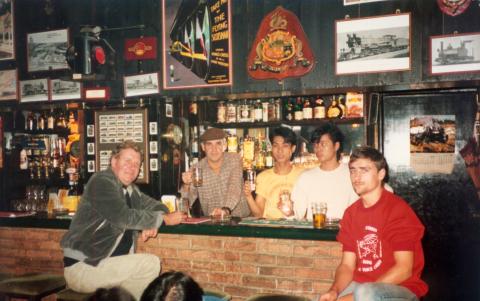
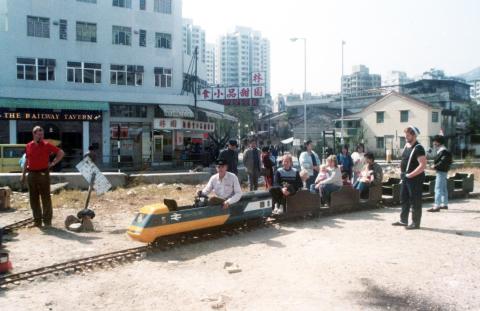

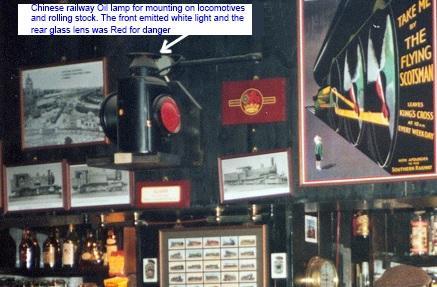

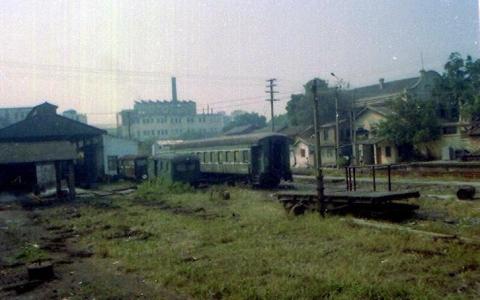
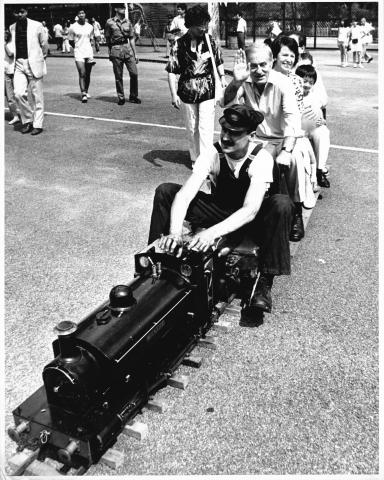
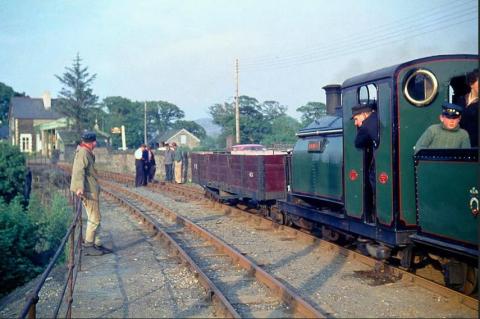
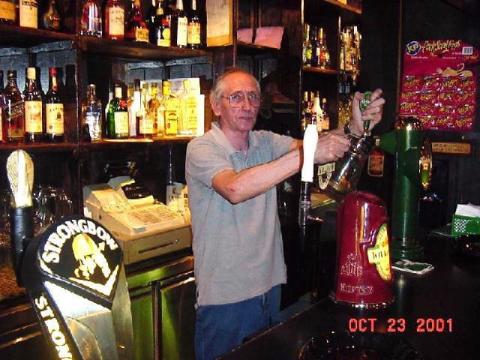
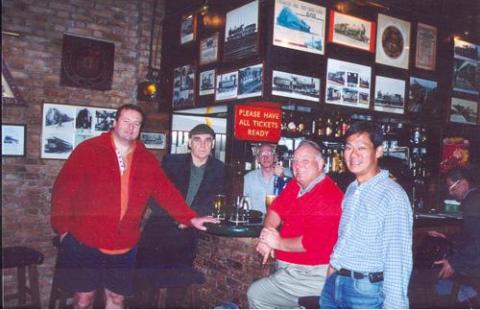
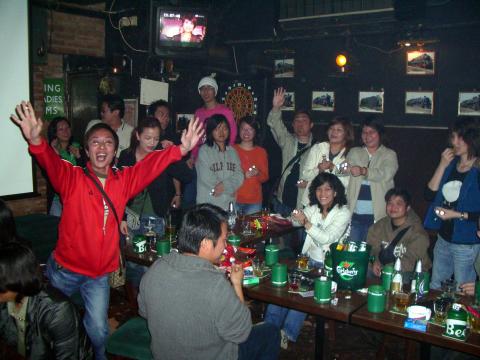

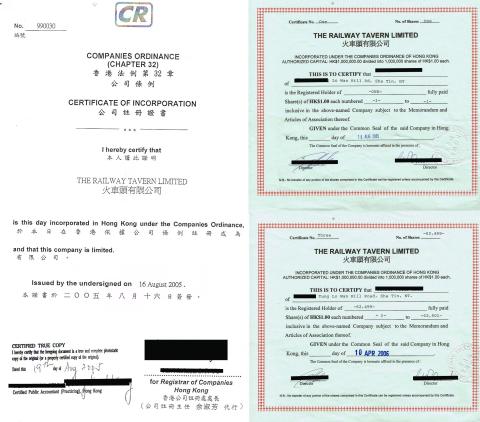
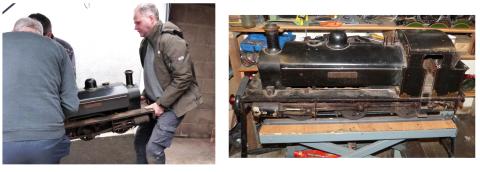
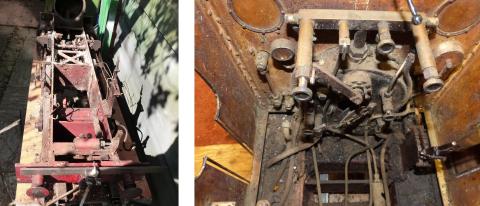
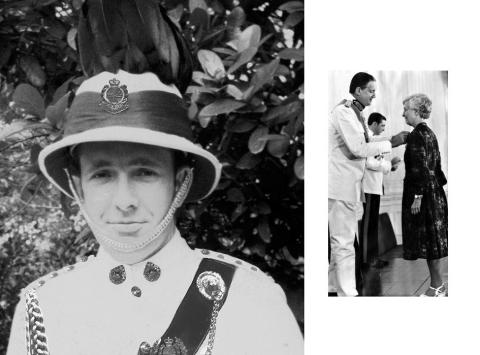

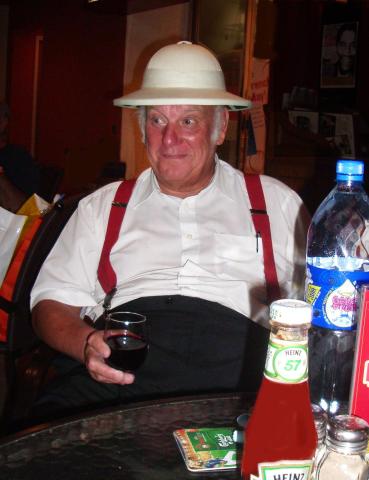
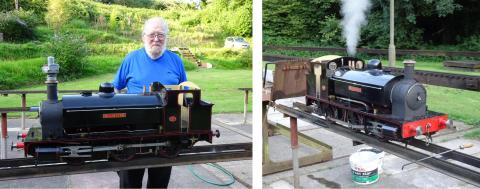
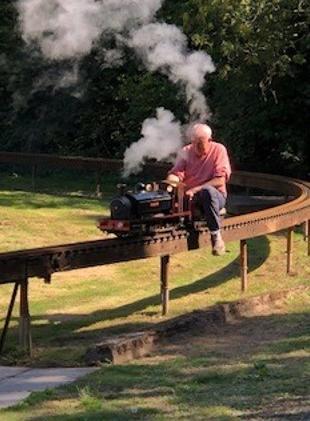
Mike Elvy
A most interesting article and happily it filled in my questions about Mike Elvy as I have always wondered what happened to him after I also had seen his photo in Bangkok.
re Mike Elvy
Thanks for the kind comment 'fivestar'. Pleased to hear you found the topic of interest.
It was all rather sad about Mike's misfortune. For a while in Bangkok he was doing a little better health-wise and managed to travel to West Bengal to see the Dahjeeling Himilayan Railway .I received a letter from him about this ... but this was the last communication.
Mike El;vy
Thanks also "Chinarail".
Mike used to atytend our Old Pauline lunches which I convened in the 1980s. I sent a copy of his photo on the streets in Bangkok to the OP Club asking if they could contact the Bangkok convener to see if any assistance could be given but never heard anything more. Glad he made it back to the UK.
Railway Tavern
Really enjoyed the article on the Railway Tavern. Real shame it closed. I spent a lot of lunchtimes there as I used to work in Shatin at the time, and it was only 1 stop on the KCR. Do you have any more info on the plates from the QJ type (Qianjin 前进 ) locomotives? Were they from the engines that used to pull the trains into Hong Kong?
Railway Tavern
Very many thanks for this detailed account of the history of The Railway Tavern, Chinarail. Most interesting and informative. It was good to read about former colleagues Messrs. Angus S-H, Dave T-W and, of course, the irrepressible Bob "would you like to buy a flat?" Sones! I'm afraid that I only ever visited the establishment a few times, perhaps reluctant to venture north of Boundary St. in those days!
I had to smile at your recounting the incident regarding the drunken expat A.O. who "got into a fight" with the owner of the Tai Po bar. I recall it well - unsurprisingly it made the local news.
QJ Steam Locomotives - Did they come to Hong Kong ?
Nice to hear from some of our former customers who still remember our pub. On “hilling’s” question about the QJ locomotive plates and whether these engines ever came to Hong Kong pulling the cross-border through passenger or goods trains, the answer is regrettably “no”. These locomotives were unsuitable for Hong Kong railway track. In the Mainland the Chinese railway “loading gauge” (which is a reference to the height and width of rolling stock) is too large, meaning that their locomotives, carriages or wagons could not pass through the KCR tunnels or under bridges without damaging the infrastructure. When passenger through-trains resumed services in 1979 after a gap of thirty years China had to construct and modify some special rolling stock for this purpose. However the locomotives coming into Hong Kong were diesel-powered rather than the more attractive steam engines to lineside railway "gricers" like me.
QJ 1167 built in at Zhaoqing station in c.1992. (on left) “Chinarail” standing with Ken Barnes, another Railway Tavern regular.
QJ 1505 belching heavy black smoke and thundering through the level crossing near Shenyang, N.E. China c.1982
During the early 1990s I used to go up to do a bit a “train spotting” mainly along the San-Mao Railway (三茂铁路 [Sanshui- Maoming]) which was a provincially owned company, separate from China national railways. This line operated trains between Guangzhou and Maoming via Foshan, San Shui and Zhaoqing. The line was later extended to Zhanjiang where there is an oil refinery. One passenger train was specially fitted out as a so-called “luxury hotel” on wheels taking about 12 hours for an overnight trip from Guangzhou to Zhanjiang.
The train destination board on the San-Man Railway's ‘Hotel Train’ with their own special company logo. The embroidered lace curtains depict tropical scenes with palm trees. This is because this rail route is the gateway to the ferry services serving Hainan island.
It was during these trips and out of sight from prying eyes, I found my street Cantonese was readily understood by the friendly railway workers in this remote part of Guangdong Province. On several occasions I was invited onto the footplate of the locomotives and twice I even got to drive the engines. Even in England this would have been taboo on main lines.
Friendly Cantonese locomotive cleaner at Zhaoqing depot c. 1992
Gwulo’s “Chinarail” doing a spot of “hands-on” with the controls of QJ 1167. Embarrassing the first time..... I opened the steam regulator a little too abruptly and experienced wheelslip.
Some of a dozen or so “QJ” plates which I collected over the years came from travelling up to Guangzhou in the 1980’s- 1990’s regularly to meet a contact who was able to buy these from locomotive depots, mainly around Changsha in Hunan Province. This was when these engines were being progressively withdrawn and broken up for scrap. The plates weren’t exactly easy to remove from the locomotives because they were mounted high up on the locomotive’s dome and held in place by heavily rusted rivets.
Collection of QJ locomotive plates from scrapped locomotives
Palms needed to be greased but usually a carton of foreign cigarettes was considered a good a trade. But then then I had to make all the effort worthwhile for the contact who didn’t smoke: usually about RMB 30 per plate at that time. These plates each weigh about 13 kilos and getting them back to Hong Kong by train took some doing. I once had 7 plates balanced on a flimsy luggage trolley which finally collapsed just as I got to my front door. I still have a handful of these rusting gently, hidden in a storage room in my block so long as I can convince the new security staff that they belong to me.
A great read
Thanks for this wonderful read. Although I came here in 1999 and, of course, heard of The Railway Tavern, sadly, I never made it there. But your story brings it all to life.
THE RAILWAY TAVERN's BOSS
Hi Peter, how are you??
@ How Are you ?
Ricky
Doing fine thank you. Contact me at email : petera.crush@yahoo.com
Peter